The Conner Prairie 17th Annual Traditional Arts and Arms Making Workshop is history. Flintlock fans came from California to New England to learn from a core of talented instructors. A majority of the students come back year after year. Take a look at what you missed and what is in store for next year. If you shoot black powder, you’ll want to see this.
I had heard about the Conner Prairie classes for quite a number of years. I knew some of the instructors because of visits to the National Shoots at Friendship. I learned about the date for this year’s classes from Lee Larkin at the Fall Shoot. Lee gave me a folder describing the classes and encouraged me to come. Lee’s class on horn-building would be one of many classes offered this year, many of which I would like to take. I decided to make arrangements to do an article for BlackPowderMag, reporting on the classes this fall and to help promote the class offerings for the fall of 2007. Nathan Allen is the Manager of Historic Trades at Conner Prairie. He liked the idea of promoting the classes, and we arranged for me to visit on Tuesday.
When I first walked in I was surprised at the facilities. The blacksmith shop is the best place for teaching blacksmithing that I’ve seen. Boasting 10 forges with electric blowers, the shop was extremely well equipped. With an instructor for every 6-8 students, the opportunity for learning couldn’t have been better. Nathan Allen and Melvin Lytton were the instructors for tomahawk making. I had a chance to photograph students and instructors as they worked. Each of the students would make four tomahawks during the week. Each step in the process would be completed on all four hawks at once, giving the student a chance to become proficient at that step before beginning the next step. In the five day hawk class, the students made four Fort Meigs style hawks. On the previous 2-day weekend class, students made four pipe tomahawks. It would have been easy to stay here and learn, but there were more cool things to photograph. I walked away thinking that I need to take this class.
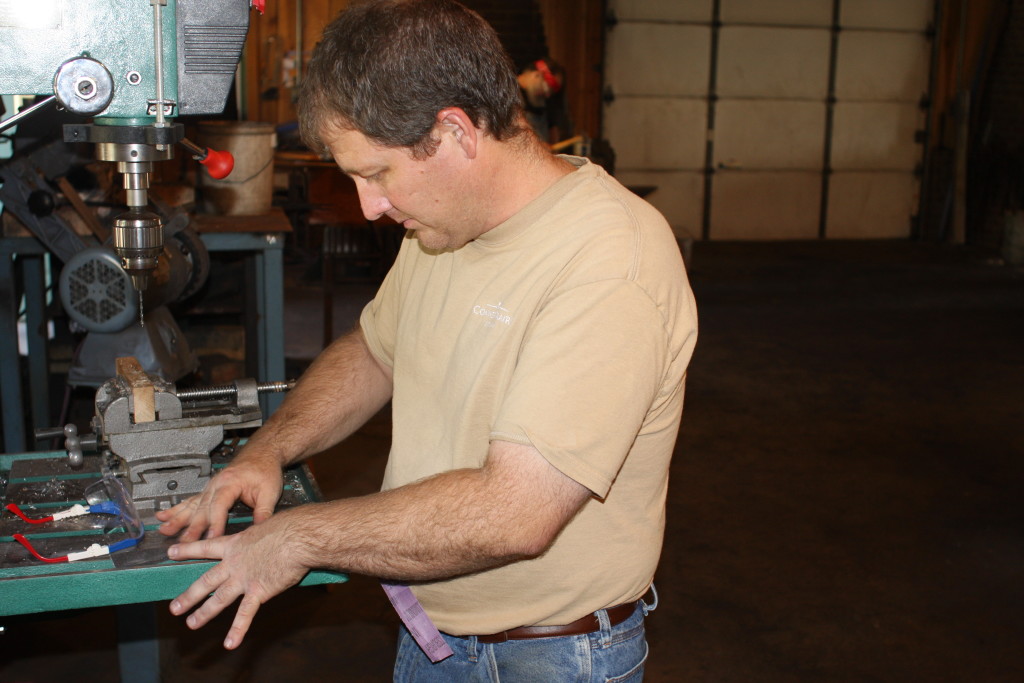
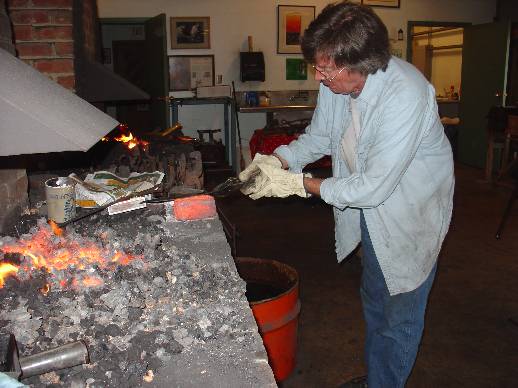
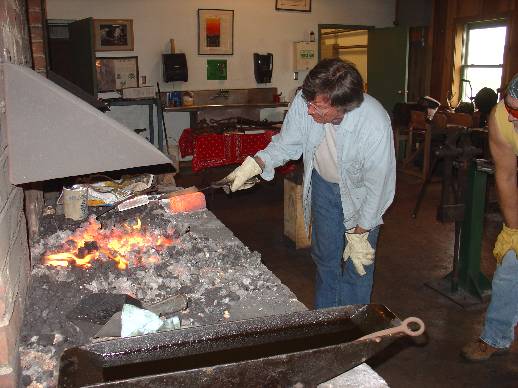
Next to the hawk forges were the fellows making knives under the supervision of Hershel House. I knew Hershel from the rifle-building seminars at Bowling Green Kentucky, but I was only one of many students Hershel has taught, and I’m not sure he remembered me. But, he treated me like one of the family and invited me to get involved. He was about to draw the temper on a blade, and in a moment the students and I were watching colors showing in the blade. As I looked at the various knives being made, I noticed that while the knives were all unique, they all had hand forged blades and many had antler handles. The students’ knives varied in size from quite large to delicate little patch knives. Again I came away thinking that this was another class I need to take.
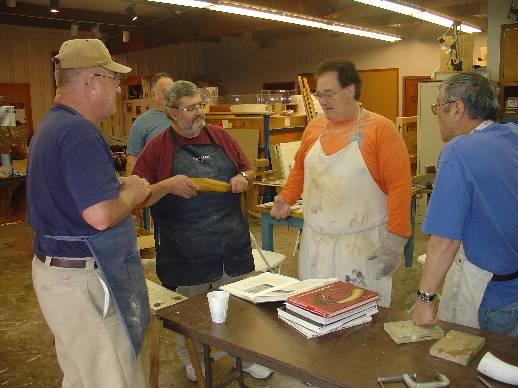
My next stop was the horners’ corner. Lee’s students were shaping the horns and finishing the plugs. Dye was being heated, and the horns began to take on that 200 year old look. I took photos throughout the day, returning to see the students ready for a new step. Again, a small student/teacher ratio paid off as students got much individual attention. On one of my last trips to watch the horners, Larkin was showing his class tips and tricks for engraving their horns. From blade shapes and sharpening to actual cutting techniques, Lee’s students seemed well prepared for the engraving step. I regretted that I would not see their finished products. It’s another class I need to take.
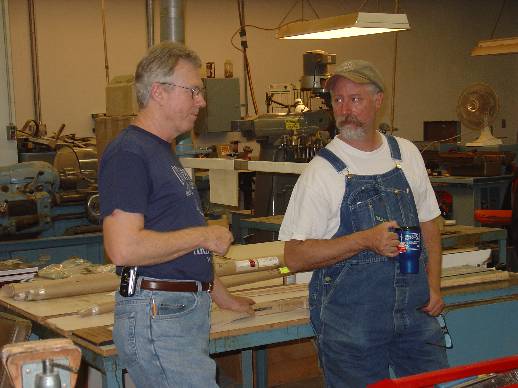
Through the next door is the kit assembly class. Here Jim Chambers, Mike Brooks, and John Weston assisted students to get the rifle components together correctly. Jim and Mike are subjects of BlackPowderMag interviews elsewhere on this site. I have known each since the ‘80s. All three are very capable instructors, stepping in frequently to show the students their techniques. If a student needed extra inspiration, he would only need to walk over to a rack of finished guns brought by the instructors. Among them is perhaps the most beautiful flintlock rifle I have ever seen. This rifle was on a tour of various art exhibits, including Conner Prairie called: “Three Centuries of Tradition: The Renaissance of Custom Sporting Arms in America”. Jim Chambers can be justifiably proud of it. As I was looking at it, I heard one of the instructors say, “That is the finest flintlock in America.” I won’t argue with him.
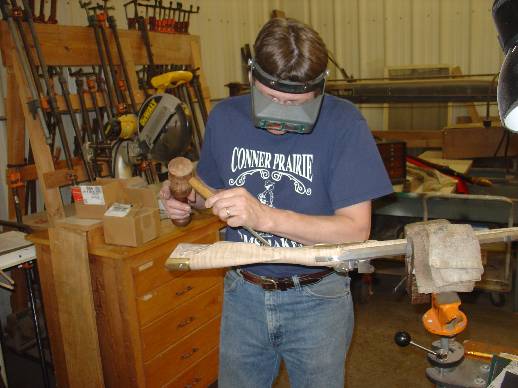
The next class is stock carving. Here James Klein has a group of students at work on various styles of stock decorating. Some are working on “Quaker” stocks, while others are working on a stock from a project at home. James also has a stock to carve as he works with the students. They can see Klein demonstrate the technique before they attempt it. These students also have the advantage of working with a unique swivel vise that Conner Prairie has provided. It allows the builder to hold the stock in about any angle he chooses. I had a chance to see students working on about every phase of stock carving from the drawing the pattern to contouring the raised parts of the carving.
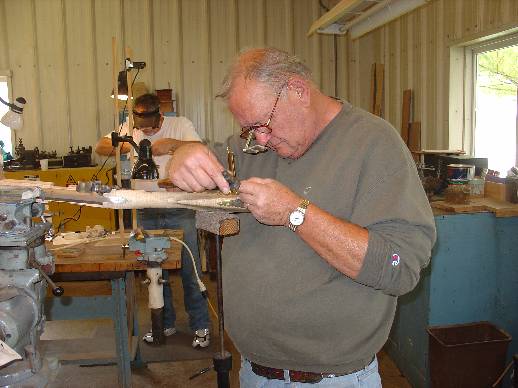
The engraving class was nearby. John Schippers was the instructor. John has retired from Conner Prairie, but returns to teach. In earlier years John had much to do with the development of this program. Besides his early contribution, the class benefits greatly when John returns to teach engraving. He and his students use an elevated vice that permits a straight back while working. As in other classes the small student /teacher ratio helps students make great progress during the week. In addition to the personal attention John can give students, he is working on a book which will allow the student additional access to John’s engraving skills. His book, called Custom Engraving, is soon to be published. Other instructors spoke highly of John’s book, one saying he knew he could learn from it.
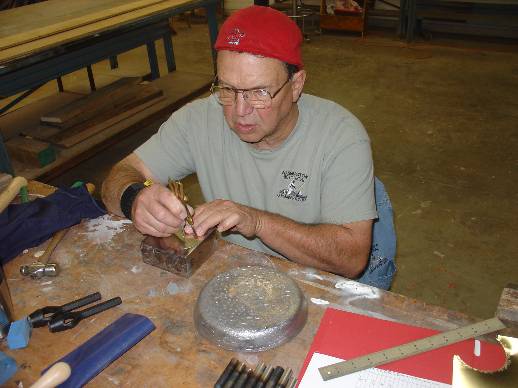
Down the hall was the last of the five day classes. The trade silver class was taught by Don Secondine. Students again benefited from a small student/teacher ratio. Don first assisted the class in making a battery of punches to use in decorating the silver project. When I was there the students were finishing the punches and beginning the layout of their project. Some had begun stamping. This class contained a number of women who were interested in making trade silver. Some had husbands in other classes and decided to accompany them, enrolling in a class of their own. As in other classes, it would have been good to see the students’ work at the end of the class instead of just the second day. I’m sure the pride of completing the project would have been worth getting on film.
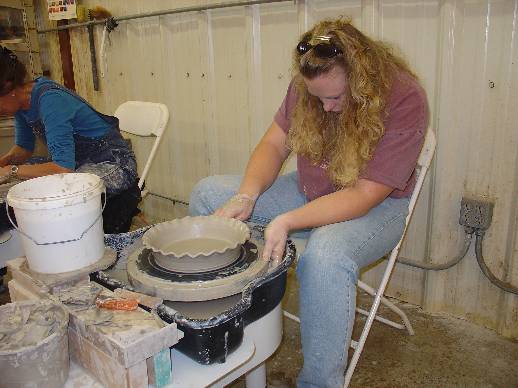
The pottery class is another of the three day classes. The instruction here was one to one as Larry Gilliam and his assistant had only two students. Both were working on wheels when I was there. Barbie Chambers, Jim’s daughter was working on a deep pie pan. Photos in the gallery of this magazine will give some idea of the variety available in the class. I was impressed with how well the students managed the wheels.
There were two classes that did not meet until the last half of the week. Ken Scott will teach a class making leather pouches and bags. I have seen Ken’s work at gun shows and wish I had not missed his class. Robin Scott will teach a course in quill work during the second half of the week. This is another skill where I have little knowledge, but for which I have great admiration.
This was an impressive week. The instructors were superb and must have had fun working with such motivated students. The equipment and environment provided by Conner Prairie was second to none. As I moved from class to class, I often felt that I need to come next year and take classes. Many of the students voiced this opinion. A high percentage of the students are returning former students. One student had been here for nine years. If there could be a better endorsement I don’t know what it would be.
Larry Pletcher, editor

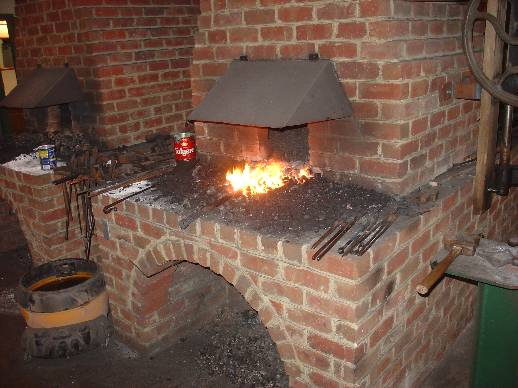
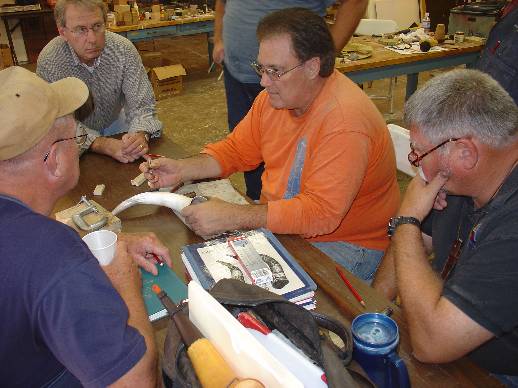
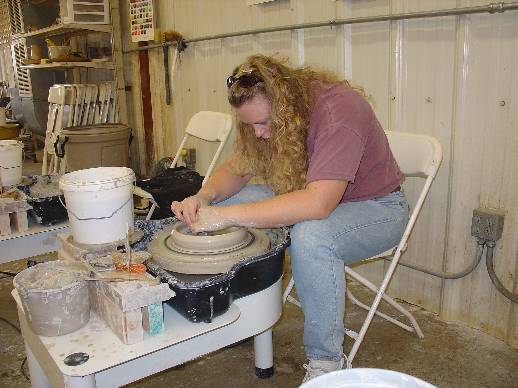
Leave a Reply
You must be logged in to post a comment.